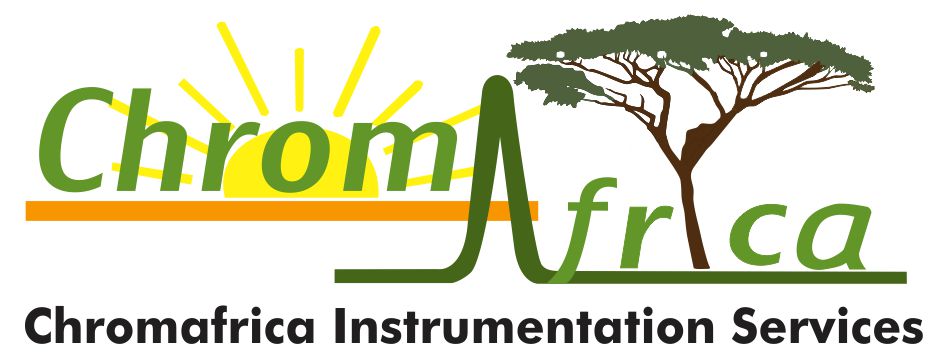ELISA,ELECTROPHORENSIS(SDS &NATIVE PAGE),DNA/RNA AND WESTERN BLOTTING
DATE 4th – 8th MARCH 2024 (5 Days)
DEADLINE FOR REGISTRATION : 23rd FEBRUARY 2024
COST :Ksh.92800 or USD 928.00
COURSE OVERVIEW
Chrom Africa offers an outstanding platform for training on Polymerase Chain Reaction- Enzymes-linked Immunosorbent assay(PCR-ELISA) which is a commonly used analytical and biochemistry assay and or diagnostic tool in medicine,plant pathology,biotechnology and quality control check in various industries.
Delving into details the following techniques will be covered-;
The enzyme-substrate reaction produces a measurable signal (usually color change) that indicates the presence or concentration of the target molecule.
There are two main types:
Proteins are denatured and coated with SDS, which imparts a uniform negative charge.
They migrate through a gel matrix based on size.
2. Native PAGE (Non-denaturing Polyacrylamide Gel Electrophoresis):
Used for native protein analysis (maintains protein structure).
No SDS is used, and proteins retain their native charge.
Migration depends on both size and charge.
The genetic material in all living organisms.
Composed of nucleotides (adenine, thymine, cytosine, and guanine) arranged in a double-stranded helix.
Stores genetic information and serves as a template for RNA synthesis.
RNA (Ribonucleic Acid):
Single-stranded nucleic acid.
Types include messenger RNA (mRNA), transfer RNA (tRNA), and ribosomal RNA (rRNA).
Involved in protein synthesis, gene regulation, and other cellular processes.
Steps:
Protein Separation:
Proteins are separated by SDS-PAGE or other electrophoresis methods.
Transfer to Membrane:
Proteins are transferred from the gel to a membrane (usually nitrocellulose or PVDF).
Blocking:
The membrane is blocked to prevent nonspecific binding.
Primary Antibody Incubation:
Specific primary antibodies bind to the target protein.
Secondary Antibody Incubation:
Secondary antibodies (conjugated to enzymes or fluorophores) bind to the primary antibodies.
Detection:
Enzymatic or fluorescent substrates generate a signal, revealing the presence of the target protein13.
SUITABILITY
This course is suitable for researchers, scientists, laboratory analysts, graduate students and postgraduate students who have a background in molecular biology/biotechnology,analytical chemistry or biochemistry, who are interested in learning more about the practical aspects of the course.
DATE 4th – 8th MARCH 2024 (5 Days)
DEADLINE FOR REGISTRATION : 23rd FEBRUARY 2024
COST :Ksh.92800 or USD 928.00
COURSE OVERVIEW
Chrom Africa offers an outstanding platform for training on Polymerase Chain Reaction- Enzymes-linked Immunosorbent assay(PCR-ELISA) which is a commonly used analytical and biochemistry assay and or diagnostic tool in medicine,plant pathology,biotechnology and quality control check in various industries.
Delving into details the following techniques will be covered-;
- ELISA (Enzyme-Linked Immunosorbent Assay):
The enzyme-substrate reaction produces a measurable signal (usually color change) that indicates the presence or concentration of the target molecule.
- Electrophoresis:
There are two main types:
- SDS-PAGE (Sodium Dodecyl Sulfate Polyacrylamide Gel Electrophoresis):
Proteins are denatured and coated with SDS, which imparts a uniform negative charge.
They migrate through a gel matrix based on size.
2. Native PAGE (Non-denaturing Polyacrylamide Gel Electrophoresis):
Used for native protein analysis (maintains protein structure).
No SDS is used, and proteins retain their native charge.
Migration depends on both size and charge.
- DNA and RNA:
The genetic material in all living organisms.
Composed of nucleotides (adenine, thymine, cytosine, and guanine) arranged in a double-stranded helix.
Stores genetic information and serves as a template for RNA synthesis.
RNA (Ribonucleic Acid):
Single-stranded nucleic acid.
Types include messenger RNA (mRNA), transfer RNA (tRNA), and ribosomal RNA (rRNA).
Involved in protein synthesis, gene regulation, and other cellular processes.
- Western Blotting (Immunoblotting):
Steps:
Protein Separation:
Proteins are separated by SDS-PAGE or other electrophoresis methods.
Transfer to Membrane:
Proteins are transferred from the gel to a membrane (usually nitrocellulose or PVDF).
Blocking:
The membrane is blocked to prevent nonspecific binding.
Primary Antibody Incubation:
Specific primary antibodies bind to the target protein.
Secondary Antibody Incubation:
Secondary antibodies (conjugated to enzymes or fluorophores) bind to the primary antibodies.
Detection:
Enzymatic or fluorescent substrates generate a signal, revealing the presence of the target protein13.
SUITABILITY
This course is suitable for researchers, scientists, laboratory analysts, graduate students and postgraduate students who have a background in molecular biology/biotechnology,analytical chemistry or biochemistry, who are interested in learning more about the practical aspects of the course.
Deadlines
Useful links
Downloads
- COURSE OUTLINE -ELISA, Electrophoresis (SDS&NATIVE PAGE), DNA/RNA and Western blotting
- REGISTRATION FORM









